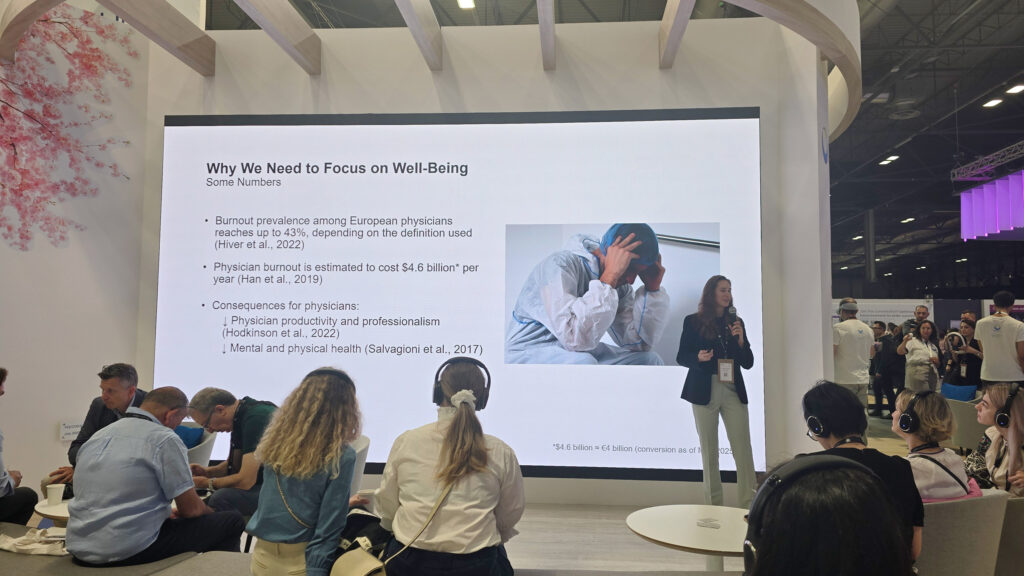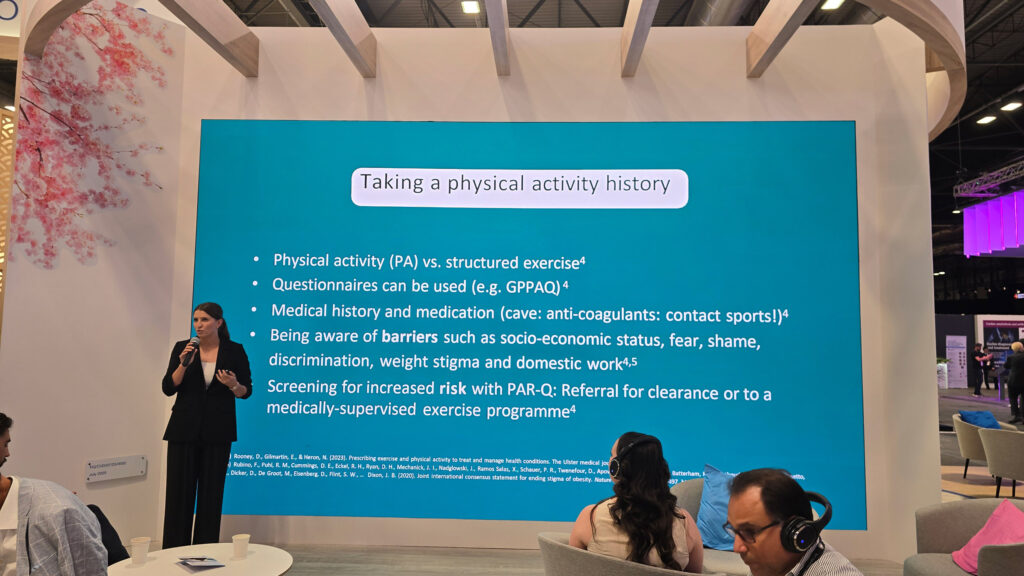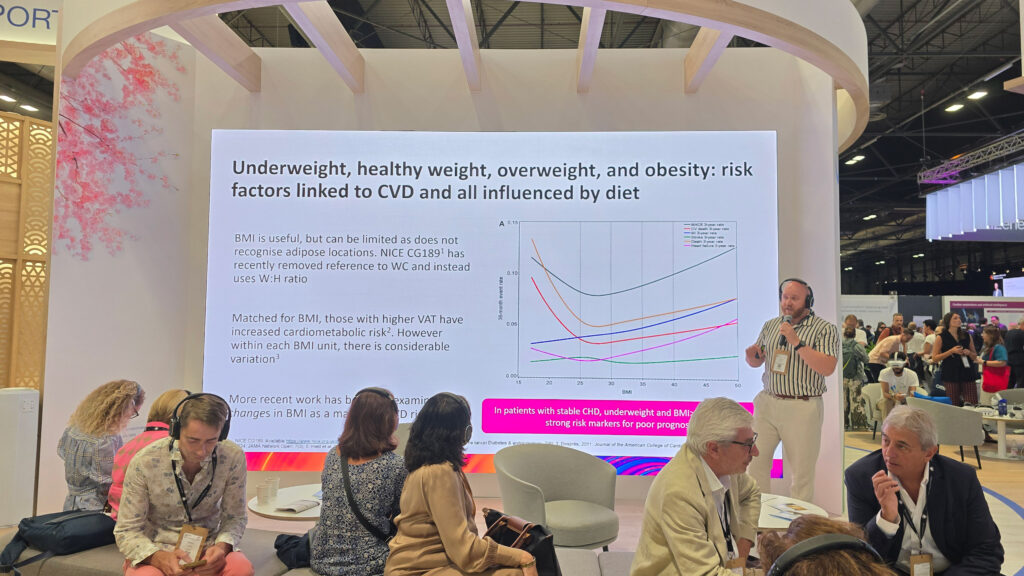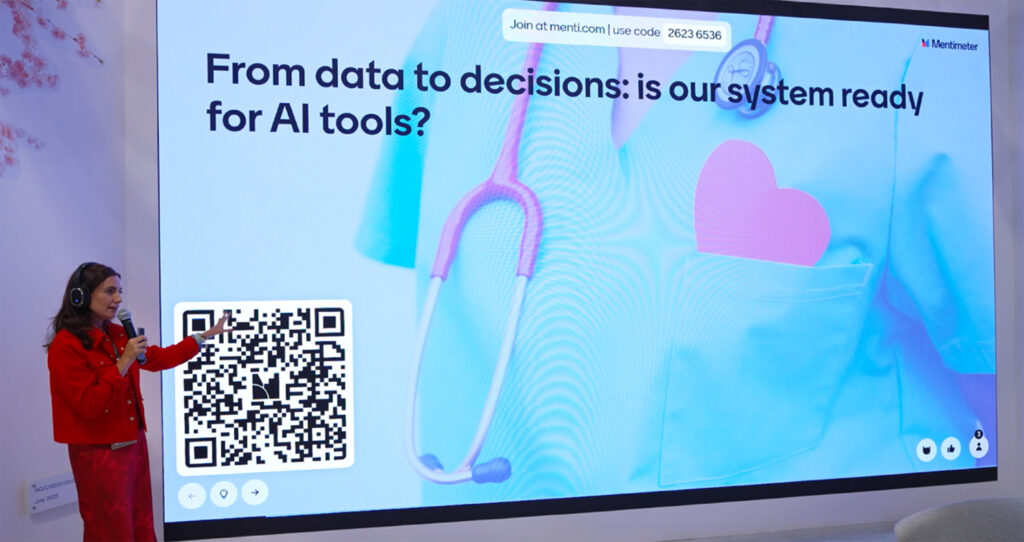Daiichi Sankyo Europe recently attended the annual European Society of Cardiology (ESC) Congress in Madrid, bringing together healthcare professionals and researchers to discuss how we can advance patient care and our understanding of heart disease.
The event was extremely insightful, and a true reminder that knowledge and the exchange between different renowned professionals in their fields is key to shaping the future or heart health and ultimately improving patient outcomes.
To emphasise the evolving role of cardiovascular disease within the broader global health landscape, this year’s Spotlight Topic was “Global Health”. This deeply resonates with our own beliefs and initiatives, including our 2025 European Heart Health Survey, that the prevention and management of heart health requires diverse insights, to tailor activities and ensure the knowledge of prevention is at everyone’s fingertips.
Following last year’s success, we invited four holistic heart health experts to the Daiichi Sankyo booth to share their expertise around why the mind, body, and nutrition matters in heart health, as well as the role that AI and digital tools can play. Read on for some of the key takeaways from their ‘Holistic Heart Health’ presentations.

Mind: Supporting heart health through well-being in clinical care
Claudia Garbrecht, psychologist, fitness trainer, and specialist in holistic health, shared her thoughts on how mental health can have a direct impact on heart health.
During the presentation, Claudia explained how a state of mental well-being can play a key role in the outcomes of cardiovascular disease (CVD), affecting lifestyle choices, with poor mental health contributing to poorer health choices.
She highlighted the science of burnout, highlighting that burnout prevalence among European physicians reaches up to 43%,1 and physician burnout is estimated to cost $4.6 billion per year.2 Consequences including a decrease in physician productivity and professionalism,3 as well as a decrease on mental and physical health,4 having a knock-on effect for patients in terms of safety incidents and dissatisfaction.3
From our 2025 European Heart Health Survey, one finding states that 1 in 4 patients feel unsupported by their doctor to take an active role in their treatment and heart health decisions. As such, nearly half of patients report reluctance to share heart health concerns with their physician or healthcare provider for fear of not being taken seriously.5
There are measures that can be taken which may help improve mental health and therefore potentially reduce CVD risk, including practicing gratitude and mindfulness,6,7 active constructive responding and team activities to build a supportive network,8,9 and focusing on the success stories.10
You can read more on what Claudia has to say on how psychologists can improve holistic heart health in Europe in our interview with her here.

Body: How to prescribe exercise for CVD patients to improve heart health
Sports scientist Klara Fuchs, offered valuable insights on the significance of helping patients shift their mindset around exercise and fitness. She also shared her top recommendations for designing a practical and personalized exercise routine.
Klara explained that the key to improving heart health is education, and adopting a simple daily routine can gradually improve fitness and cardiovascular health. Physical activity accumulated in bouts of even <10 min is associated with favourable outcomes, including decreased mortality.11
When it comes to physical fitness specifically, exercise can have a huge impact on quality of life. Interventions shown to increase physical activity level or reduce sedentary behaviour theory-based interventions, such as goal-setting, re-evaluation of goals, self-monitoring and feedback.12
From our 2025 European Heart Health Survey, it was evident that among the general public, lifestyle factors, such as physical activity are considered a main barrier to cardiovascular health. While women are significantly more likely than men to report that stress prevents them from maintaining their heart health, men feel significantly less confident at managing it.5 As such, being aware of individual patient barriers is critical when taking a history, in particular the difference between men and women and the issues around time and other external factors that may have an impact.
Klara recommends that exercise prescription needs to be individualised using the FITT principle, a method supported by the World Health Organisation in their guidelines on physical activity and sedentary behaviour:13,14
- Frequency (e.g. 3x per week)
- Intensity (moderate aerobic, vigorous anaerobic, heart rate)
- Time (e.g. 30 mins, continuous, interval)
- Type (e.g. running, walking, swimming, resistance training)
- Goal: 150 minutes of moderate exercise and resistance training
“It is not enough to say, ‘change your lifestyle’ or ‘eat less, exercise more’. A lot of people may not know HOW to exercise (or eat healthier).”15

Nutrition: The cornerstone of heart health
Body weight, is one of the top three cardiovascular disease risk factors perceived by the general public.5 Dr. Tom Butler also explained that it’s important for people living with, or at risk of cardiovascular health to work with nutrition experts find a dietary approach that works best for them, being mindful of dietary preferences and other comorbidities that may lead them to stop following their dietary plan.
Tom highlighted that particular diets such as low-carbohydrate and plant-based diets can be very nutritious; however, if not planned properly they can be poor in quality.16
The Mediterranean Diet (built around vegetables and fruits, nuts, legumes, and unrefined cereals, with modest amounts of fish and shellfish, and fermented dairy products), is heavily advocated for, with a large amount of evidence behind it.17,18 Notably, additional approaches should also be considered based on an individual’s preferences and any comorbidities, as two individuals can have a very different response to the same diet.
From our 2025 European Heart Health Survey, patients expressed the need for better communication (62%) from healthcare professionals and simplified health information (58%) when asked about what support would be most helpful to improve your understanding of cardiovascular health.5
In the end, every member of the healthcare team needs to champion the importance of nutrition in the patient care pathway and ensure there is an individualised approach, ensuring that the information is easy to understand and accessible.

Heart Health in the age of AI and digital tools
Telehealth innovations and wearable technologies are revolutionising the management of heart health, providing patients with more accessible and continuous care.19,20
- Tools used for RPM (remote patient monitoring) and telematic cardiac rehabilitation (CR) have the potential to reduce hospital readmissions from conditions such as heart failure. By implementing remote monitoring systems healthcare providers can maintain ongoing oversight of patients’ status.19
- Wearable devices, such as smartwatches and fitness trackers, play a critical role in the continuous monitoring of cardiovascular health.19
Artificial intelligence (AI)-powered systems further enhance clinical decision-making by improving diagnostic accuracy and treatment planning. Leveraging AI with existing datasets, such as registries and biobanks, also opens the door to new research questions, novel mechanisms, and pharmaceutical targets.21
Collectively, these technologies empower patients to take an active role in managing their heart health. By promoting adherence to lifestyle changes, they contribute to both the prevention and long-term control of cardiovascular disease (CVD), gradually reshaping the future of heart health.19-21
If you want to read more about future innovations and how technology is shaping heart health care, have a look at our article on “how artificial intelligence may shape the future of cardiology”.
Collaboration for holistic heart health care is key
The ESC Congress was an important reminder that interprofessional collaboration (including clinicians and health-related professionals) and the adoption of a holistic mindset is fundamental to improving cardiovascular disease across Europe. If you’re interested learning more on our insights to holistic heart care, have a look at our two newest European Heart Health Survey factsheets: “Your Heart, Your Health: Navigating Cardiovascular Health” and “Cardiovascular Care: Enhancing Patient Engagement and Education”.5


